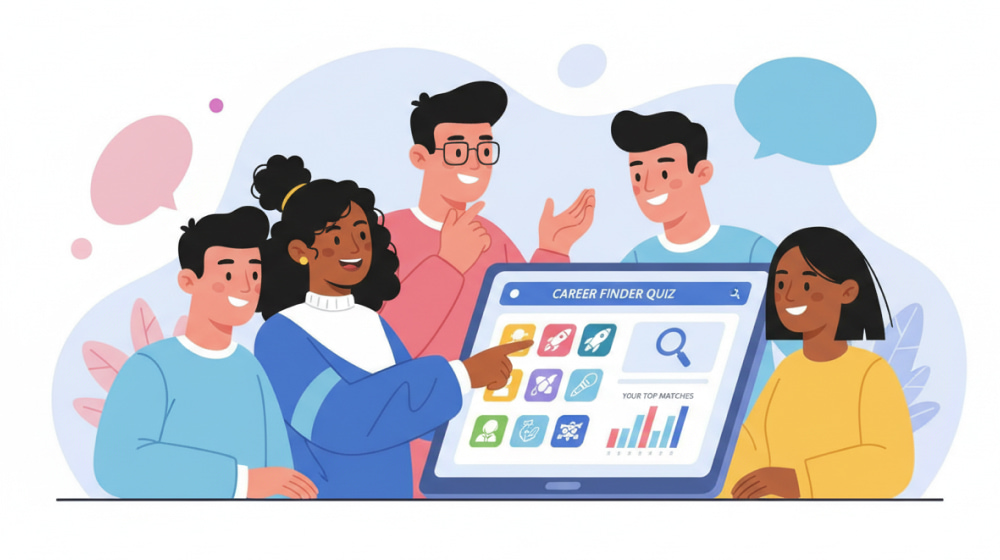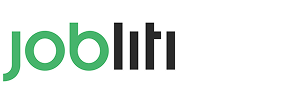Free Career Planning Guide: Choose Tests That Reveal Your Strengths and Fit

Take Quiz to Find the Right Career for You
Start the Test →Why a Modern Career Assessment Matters More Than Ever
Choosing a vocation isn’t a single decision; it’s a series of calibrated moves guided by data, reflection, and small experiments. A thoughtful assessment accelerates this process by converting scattered interests into usable insight. Instead of guessing, you gain structure: clear language for your talents, environments that suit you, and roles that fit your tempo. When you treat discovery as an ongoing practice, you reduce risk and build momentum, one informed step at a time.
Before investing serious time or money, many people run a quick screening to validate instincts and uncover blind spots. In that spirit, you might explore a free career finder as a snapshot that highlights themes you can test with projects and informational interviews. Early clarity compounds, and plenty of seekers appreciate how a find my career test free translates fuzzy interests into actionable pathways without pressure or jargon.
- Clarify strengths with language you can use in resumes and networking.
- Spot mismatches early to avoid costly training detours.
- Build confidence by aligning choices with evidence, not hunches.
What Credible Assessments Actually Measure (and Why It Matters)
Good tools don’t “decide your fate”; they surface patterns you can verify in the real world. The strongest frameworks triangulate three pillars: interests, aptitudes, and values. Interests energize you, aptitudes indicate what comes easier with practice, and values define conditions under which you thrive. Together, these lenses help you rank opportunities and say no to attractive but unsuitable paths.
Behind the scenes, researchers design free career finding tests to balance psychometric rigor with plain‑English feedback, blending item response theory with practical guidance. Beginners sometimes test the waters with a career finder test free to sample formats, compare result depth, and decide whether deeper diagnostics are warranted. The signal you want is coherence: repeated themes across different instruments and consistent reactions when you trial tasks that match those themes.
- Interests: What activities spark curiosity and flow.
- Aptitudes: Which cognitive or technical tasks ramp quickly.
- Values: Your deal‑makers (autonomy, stability, impact, learning).
- Constraints: Time, finances, geography, and family obligations.
Turn Results Into Decisions, Not Just Descriptions
Insight without action is trivia, so treat your report as a hypothesis. Translate highlights into small experiments: shadow a pro, ship a mini‑project, or volunteer in a relevant environment. Build a short list of roles, then verify day‑to‑day realities with people doing the work. As patterns converge, you’ll feel your next steps get lighter and more deliberate.
To anchor your exploration, you could begin with a free career finder test that outlines clusters of roles and adjacent skills you can practice this month. Many learners prefer a gentle on‑ramp, and a find my career quiz free can serve as a low‑stakes warm‑up before you commit to longer inventories or portfolio sprints. Track reactions after each experiment and adjust your plan like a scientist, iterate, compare, and keep what works.
- Extract three themes from your report and validate each with a one‑week project.
- Score each project on energy, ease, and evidence of progress.
- Retire low‑scoring paths quickly; double down on high‑signal areas.
Benefits You Can Expect From Well‑Chosen Tools
Reliable assessments compress months of guesswork into a focused week. You’ll gain vocabulary for interviews, a clearer map of work environments that fit, and a prioritized skill plan. This clarity reduces burnout because your practice sessions feel purposeful and connected to real opportunities. Even better, you’ll know what to ignore, which frees time for activities that actually move the needle.
Some platforms act like a free career path finder by aligning your motivations with daily responsibilities rather than job titles alone. Others behave almost like a career finder free, offering distilled insights and next‑step suggestions without pushing upsells or complex dashboards. The net effect is traction: more targeted applications, cleaner portfolios, and conversations that resonate with hiring managers who recognize well‑matched candidates.
- Faster shortlisting of roles and industries.
- Sharper, tailored resumes and outreach messages.
- Lower risk via small, evidence‑based experiments.
- A repeatable system for pivoting as markets evolve.
Quick Comparison: Formats, Time, and Outcomes
Because not all tools serve the same purpose, it helps to compare formats before you dive in. You might start with a brief screener, then confirm results with a longer instrument that drills into aptitudes or values. For an easy entry point, many people sample a free quiz find your career to decide whether they prefer interest‑based, skills‑based, or hybrid models for their deeper dive.
| Format | Best For | Typical Time | What You Learn |
|---|---|---|---|
| Interest Screener | Quick direction check | 5–10 minutes | Motivating themes and energizing tasks |
| Aptitude Mini‑Battery | Skill ramp and learning speed | 15–25 minutes | Tasks you grasp quickly with practice |
| Values Inventory | Work environment fit | 10–15 minutes | Deal‑makers like autonomy, stability, impact |
| Hybrid Assessment | Balanced overview | 20–30 minutes | Cross‑validated profile and role families |
- Pair a quick screener with a longer tool to confirm patterns.
- Journal your reactions right after each test while details are fresh.
- Translate insights into a one‑week practice plan immediately.
A Simple Plan to Get Traction This Week
Clarity compounds when you turn insight into momentum within days, not months. Start by blocking two focused sessions on your calendar: one for a short assessment and one for outreach or a mini‑project based on the results. Then limit your choices; too many options create fatigue. Select one role family, one project, and one person to learn from, and let the rest wait until next week.
To reduce noise, schedule a career finder quiz free on a calm morning, then reserve a second block for a micro‑project that tests one recommended skill. Share your project publicly even a simple Git repo, design mockup, or short case write‑up so you get feedback fast. Momentum is a feedback loop: test, reflect, adjust, and repeat until the patterns feel undeniable.
- Block time, silence notifications, and treat it like a meeting.
- Ship something tangible within 48 hours of getting results.
- Ask for specific feedback from three people who do similar work.
Common Mistakes to Avoid While Interpreting Results
It’s tempting to treat a report like a verdict, but the smartest approach is to see it as a conversation starter. Don’t chase labels; extract behaviors and environments that energize you, then prototype. Another pitfall is confirmation bias only noticing evidence that supports your initial hunches while ignoring disconfirming data. Keep a simple scorecard to stay honest.
Newcomers sometimes confuse a free career finder quiz with broad personality tests and expect instant certainty, which creates unrealistic expectations about precision. The fix is simple: run small, time‑boxed experiments and compare your reflections with the report’s claims. If three short trials align with your results, you’re on the right track; if not, adjust and retest with a different lens.
- Avoid over‑generalizing from one tool; triangulate with action.
- Don’t outsource judgment; treat advice as input, not orders.
- Beware of paralysis by analysis; ship small and learn fast.
FAQ: Clear Answers to Common Questions
How accurate are free assessments compared to paid ones?
Accuracy varies by design quality and sample size used during validation. Many free tools are directionally useful for narrowing choices, especially when you confirm results with real‑world tasks. Treat any report as an informed hypothesis, then run short experiments to verify claims under practical conditions.
Which assessment should I start with if I’m overwhelmed by options?
Begin with a short interest screener to identify energizing themes, then follow with a values inventory to check environment fit. If both point to similar role families, add an aptitude mini‑battery to gauge learning ramp. For those craving a guided entry point, some people try a free career quiz find my perfect career as a gentle orientation before committing to deeper tools.
How do I translate results into concrete next steps?
Convert themes into mini‑projects that fit your week: build a small prototype, draft a case study, or script a mock presentation. After each project, rate energy, ease, and evidence of progress. Keep what scores high, and retire anything that drains you or stalls.
Can assessments help with career pivots or only first jobs?
They’re valuable at any transition. By clarifying transferable strengths and preferred environments, assessments help you reposition existing experience toward new roles. Pair the insights with targeted projects to demonstrate fit in a portfolio or interview.
How often should I retake an assessment?
Retest when your context changes new responsibilities, major life shifts, or fresh skills. Use consistent tools so you can compare results over time, and focus on trend lines rather than single scores. The goal is direction, not perfection.
